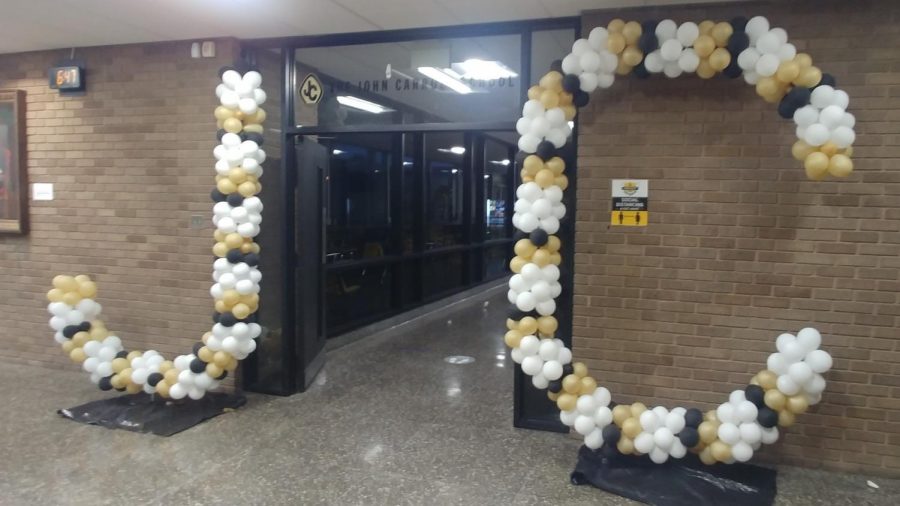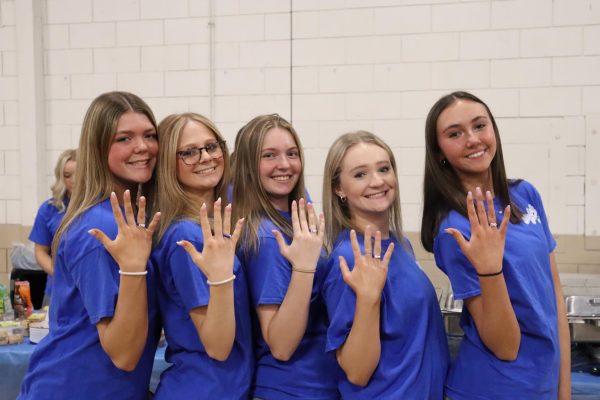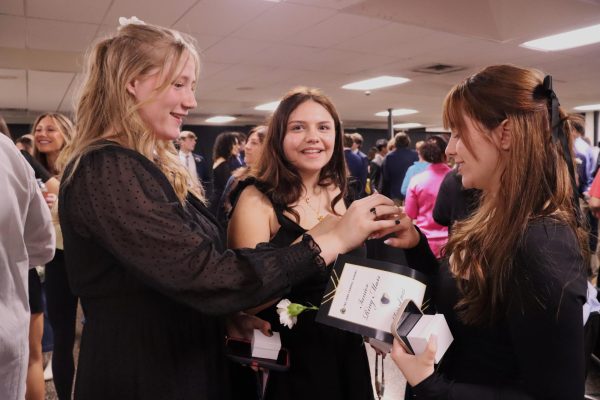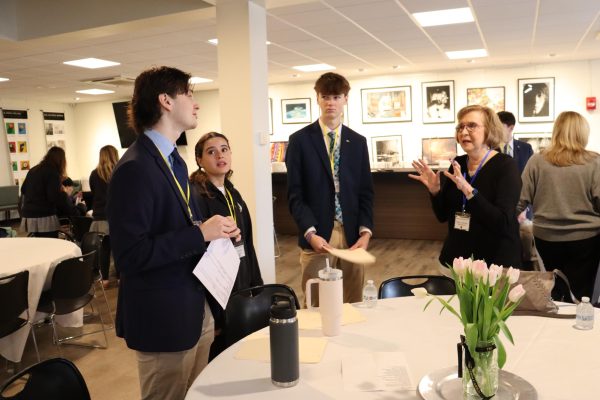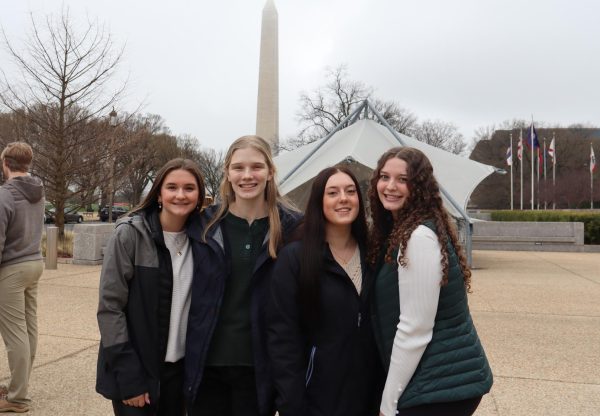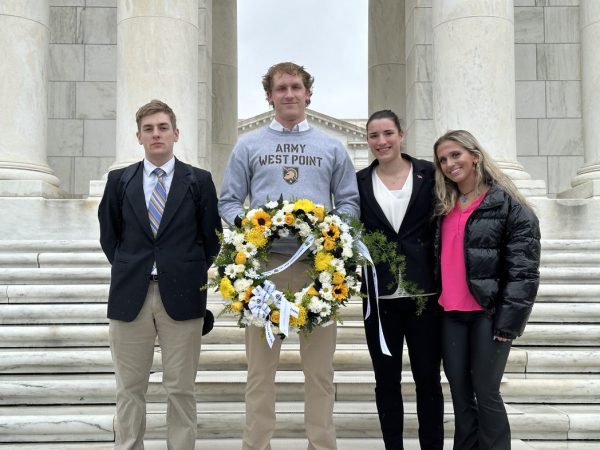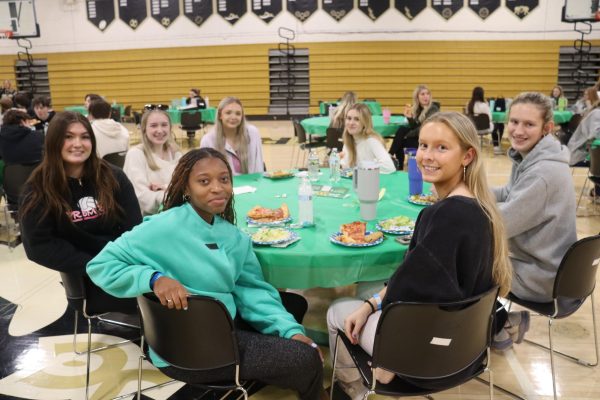April marks beginning of 100% in-person learning
Return from Spring Break will see more students in the building
April 6, 2021
An official announcement was released on March 12 regarding the in-person learning schedule for the remainder of this school year. The final decision was to expand to 100% capacity within the building for those choosing to come in beginning upon the return from spring break.
The email from JC President Steve DiBiagio answered questions concerning things such as overflow, asynchronous days, COVID-19 guidelines, and the factors in this decision.
Some of these upcoming changes include classroom settings requiring three feet of social distancing, common areas requiring six feet of social distancing, removing the courtyard as a place to eat lunch, allowing two-way use on the stairs, adding tents outside for students to use and the front doors opening earlier at 7:00 am while also allowing students to stay until 3:45pm.
Although many things are changing, there are still some things that are required to stay the same. Things that will be remaining are the requirement of wearing masks, being cautious of social distancing, completing the SchoolDoc before entering the building each day, and keeping asynchronous Fridays.
When looking to expand, the JC Task Force Team uses recommendations from healthcare professionals and agencies as well as the science to make the decisions of expansions. Through a few of these different factors, the expansion was planned.
Regarding the major factors of expansion, Principal Tom Durkin said, “Initially, the overwhelming majority of our adult population has been vaccinated. Secondly, the community metrics are significantly lower. Finally, there are additional studies that showed that three feet physical distancing with masks and proper hand sanitation is safe.”
These things along with student cooperation made the expansion possible.
With each new accommodation comes new adjustments to better work with the larger capacity of students.
For starters, people will need to maintain three-feet of social distancing in classrooms while in more common areas such as the Learning Commons or the cafeteria people will need to maintain six-feet of social distancing.
As for why this difference of social distancing is occurring, JC President Steve DiBiagio said, “In the classrooms students will cleanse in and out and also wear their masks at all times. We will also be able to identify close contacts in a classroom with assigned seating. In the common areas, specifically any area where students remove their mask to eat (e.g. cafeteria, lower gym), six feet of distancing will be maintained. We will also maintain six feet in common areas, so that assigned seating is not needed.”
The classrooms are easier to track and structure, which allows for only three feet of social distancing, so for the larger spaces six feet of social distance is being maintained.
School nurse Michelle Webster helped to describe the importance and protocol for some of these changes. One key element that JC has prioritized through COVID-19 is the importance of contact tracing. Contract tracing helps to maintain a close eye on students and is a tool used to prevent any spread or outbreak of the virus within JC.
In regard to how contact tracing will be affected by the expansion, Mrs. Webster said, “Contact tracing will become much more difficult. Larger groups of students might have to quarantine, causing a temporary disruption to the student’s academic and extracurricular activities.”
Keeping this in mind, assigned seating will be implemented in the classroom as well as continuing with having structured off mods as these decisions help make contact tracing easier.
Mrs. Webster said, “Students will have to sit in assigned seats, and teachers will need to make seating charts. If we have a positive case of COVID-19, the day’s seating charts will be reviewed and those who sat within six feet will be sent home to quarantine.”
Junior Samantha Jones is ready for this expansion. She said she is most excited about “seeing all of [her] friends and being able to learn in an environment that has all of [her] classmates.
As for her hopes for the remainder of the year, Sam said, “My hope is that things will get back to how they used to be, and we can all enjoy the rest of the school year as normal.”
Off mod structures also will be maintained for the same purpose as the more structured classrooms. Mr. DiBiagio mentioned off mod locations for each class, “Juniors and seniors will use the Learning Commons during free mods, and freshmen and sophomores will use the cafeteria during non-lunch mods and the Brown Room during lunch mods.”
As the weather gets warmer, more outdoor spaces can be utilized as well. For classes, teachers have the option to take their classes outside to where the JC Wi-Fi should be able to work in most of these areas.
For lunch mods students will have the options to enjoy eating in the Stadium bleachers as well as Miller Way.
The courtyard is no longer an option for students to eat lunch because “the courtyard is too small for the number of students who have lunch. That is when students are without masks, so we must maintain six feet physical distancing,” Mr. Durkin said.
Students will not be separated by grade during lunchtime. “Students will be encouraged to move through the lunch line and find the first available space to sit for lunch,” Mr. DiBiagio said.
Sophomore Claire Heimerl commented on lunch mods as she is “hoping that we will be able to be around more people and even spend more time outside for off mods and lunch.”
For additional comments, Mr. Durkin said, “Even with the improvement in metrics, the virus is still here. We ask that all students and adults continue to wear masks when going indoors anywhere and to avoid gathering in large groups.”
When looking towards the future in expectations of how this expansion will play out, Mrs. Webster said, “We do not expect that COVID-19 cases will rise as a result of this change, but I do anticipate having more students identified as close contacts.”
Mrs. Webster added, “Distance learning has been challenging for some of our students. We recognize the importance of getting the students back to in-person learning quickly, while balancing out the risk from this virus. We are hopeful that this plan will get us closer to the goal of safely welcoming all students back to school.”



